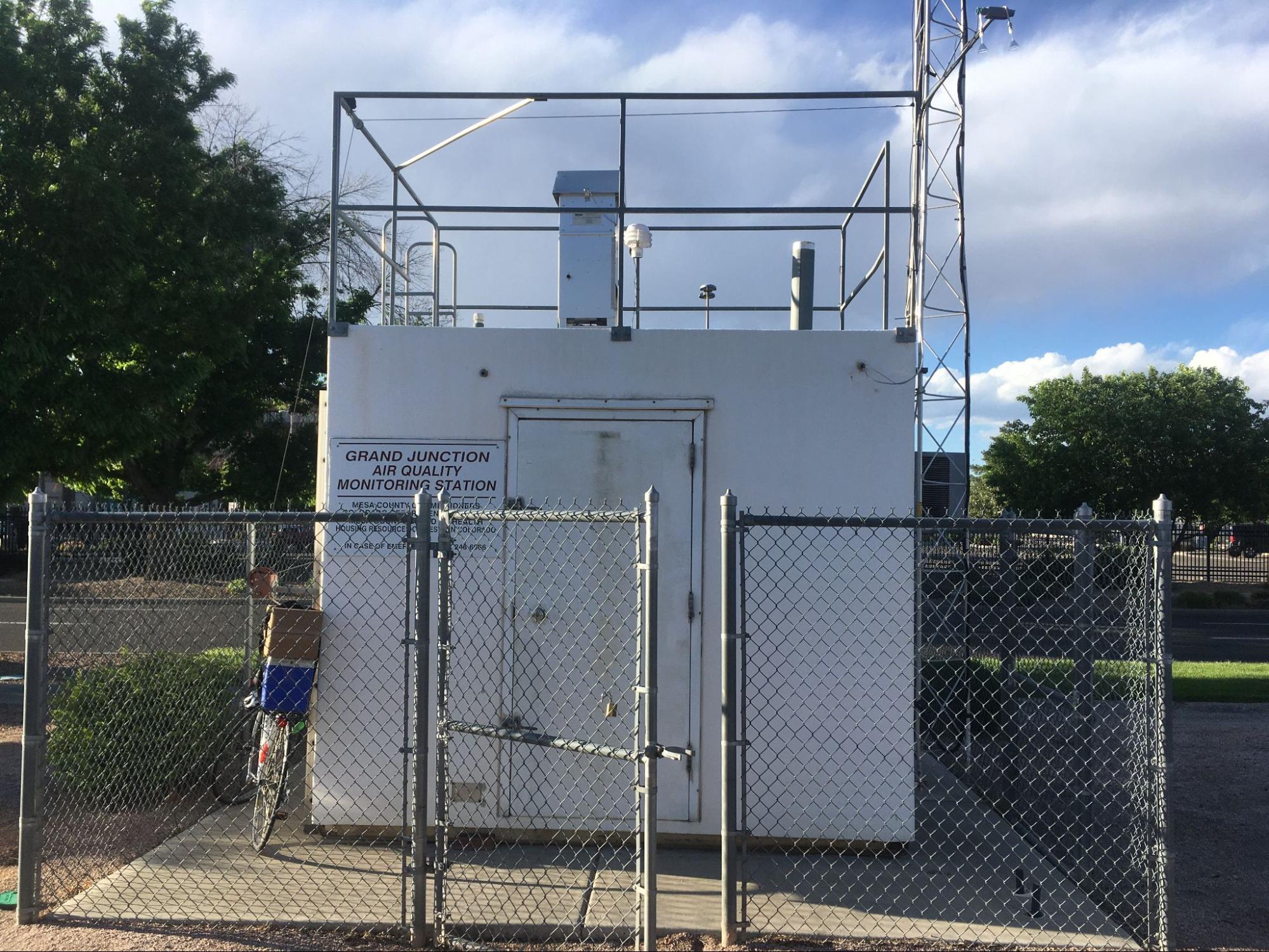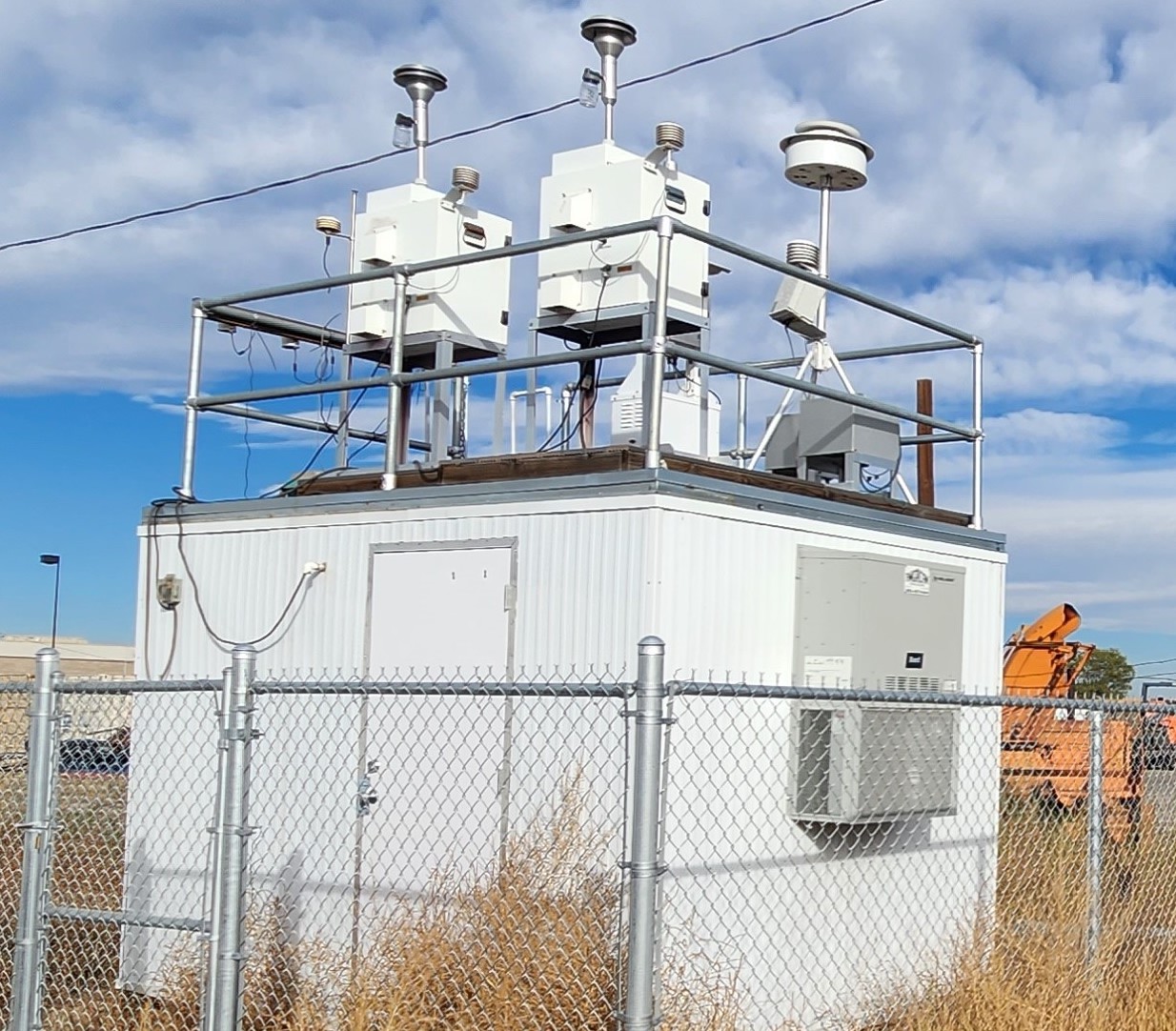Long-term air toxics trends
Long-term datasets, collected over multiple years, can provide insight into air quality trends and how air toxics levels change over time. These changes might be due to new technologies and new rules and regulations aimed at reducing air pollution. This type of information is important for reducing people’s exposure to potentially harmful pollutants.
National Air Toxics Trends Station (NATTS) network monitoring
Colorado is one of more than 22 states that participates in the National Air Toxics Trends Station (NATTS) network. There are 26 sites nationwide as of 2023. A list of the sites currently in operation is available on the EPA’s website. Colorado’s site in Grand Junction has been in continuous operation since 2004 and monitors for 98 air toxics compounds as of July 2023. This includes Tier I and Tier II compounds designated by the EPA.
The NATTS monitors track long-term trends in ambient air toxics levels. The goal is to detect a 15% difference between successive 3-year annual average concentrations.
All NATTS monitors have strict guidelines for sampling and data analyses to ensure consistency across the network. The main documents governing these processes are the Workplan Template (Workplan), and the Technical Assistance Document (TAD), both of which are specific to the NATTS program.

At a minimum, the program requires monitoring for 19 compounds that the EPA has designated as Tier I compounds due to their identification as major drivers of health risk. These Tier I compounds fall into four categories:
- Volatile organic compounds (VOCs)
- Carbonyls
- Polycyclic aromatic hydrocarbons (PAHs)
- Metals
The 42 Tier II compounds are not required for the NATTS sites, but the data are helpful and desired by the EPA. CDPHE’s NATTS site monitors for all the Tier I and Tier II compounds. A list of all the compounds is provided in Table 1.2-1 of the NATTS TAD, linked above.
The complete NATTS data set can be found on the EPA’s National Air Toxics Trends Monitoring Data & Reporting webpage.
Colorado Air Toxics Trends Station (COATTS) monitoring

In 2022, HB22-1244 (Public Protections from Toxic Air Contaminants) was signed into law. This Colorado law reinforces the state’s commitment to protecting public health by significantly expanding its air monitoring program for air toxics. Key features of the law are summarized on the Air Pollution Control Division's website.
To meet the legislative requirements, Colorado Air Toxics Trends Station (COATTS) sites must be operated in the same way as required in the federal National Air Toxics Trends Stations Program Technical Assistance Document and Workplan, adhering to the strict guidelines set forth in both those documents, and must be fully operational by summer 2025.
HB22-1244 prioritizes and protects the health and well-being of all Coloradans, including disproportionately impacted communities.
The creation of the new COATTS monitoring network will take place in two phases.
Phase I
Phase I establishes three NATTS-style monitoring sites that will begin operation no later than January 1, 2024. A presentation and recording from December 2022 discussing proposed sites for Phase I is available on the Air Pollution Control Division’s website. Based on data-informed work by the division to identify the highest priority locations, the first three sites in the network will be located in Platteville, Commerce City, and Grand Junction.
The NATTS site in Grand Junction will serve as one of the first three sites because it has a data record going back nearly 20 years. Leveraging the Grand Junction site will also allow the division to establish four more sites in Phase II, therefore expanding the program to a total of seven sites across Colorado.
The Commerce City location will be at the Adams - Birch St. site that is currently collecting data on particulate matter (PM10 and PM2.5).
A new location in rural Platteville is secure, and will operate in conjunction with a variety of other gaseous, and particulate matter monitors.
Phase II
An additional four Colorado Air Toxics Trends Station sites will begin operations by July 1, 2025. Public outreach meetings are planned to start in late 2023 to begin incorporating community feedback into the site selection process. At these meetings, the Air Pollution Control Division will present the proposed site locations and discuss data used to determine their locations.
Visit the division’s public participation webpage for the latest information on upcoming public meetings. Sign up for email updates on this topic by subscribing to the division’s “Air Toxics” and “General Air Division” Updates” email lists.